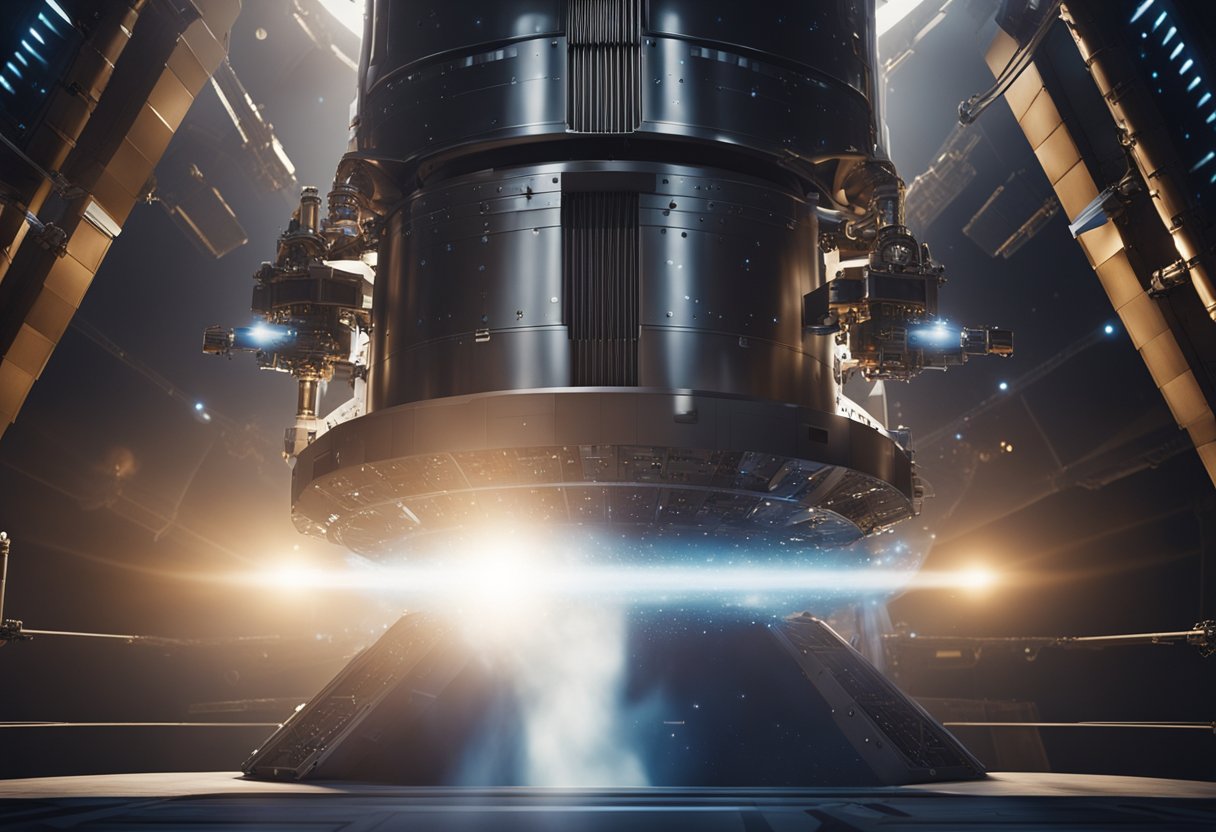
Ion thruster technology is an innovative branch of electric propulsion that has revolutionised the way we think about manoeuvring spacecraft. These devices work by ionising a propellant and using electric fields to accelerate the resulting ions to create thrust. Unlike conventional chemical propulsion, ion thrusters provide a highly efficient means of spacecraft propulsion, which makes them ideal for deep space missions where fuel efficiency is crucial.
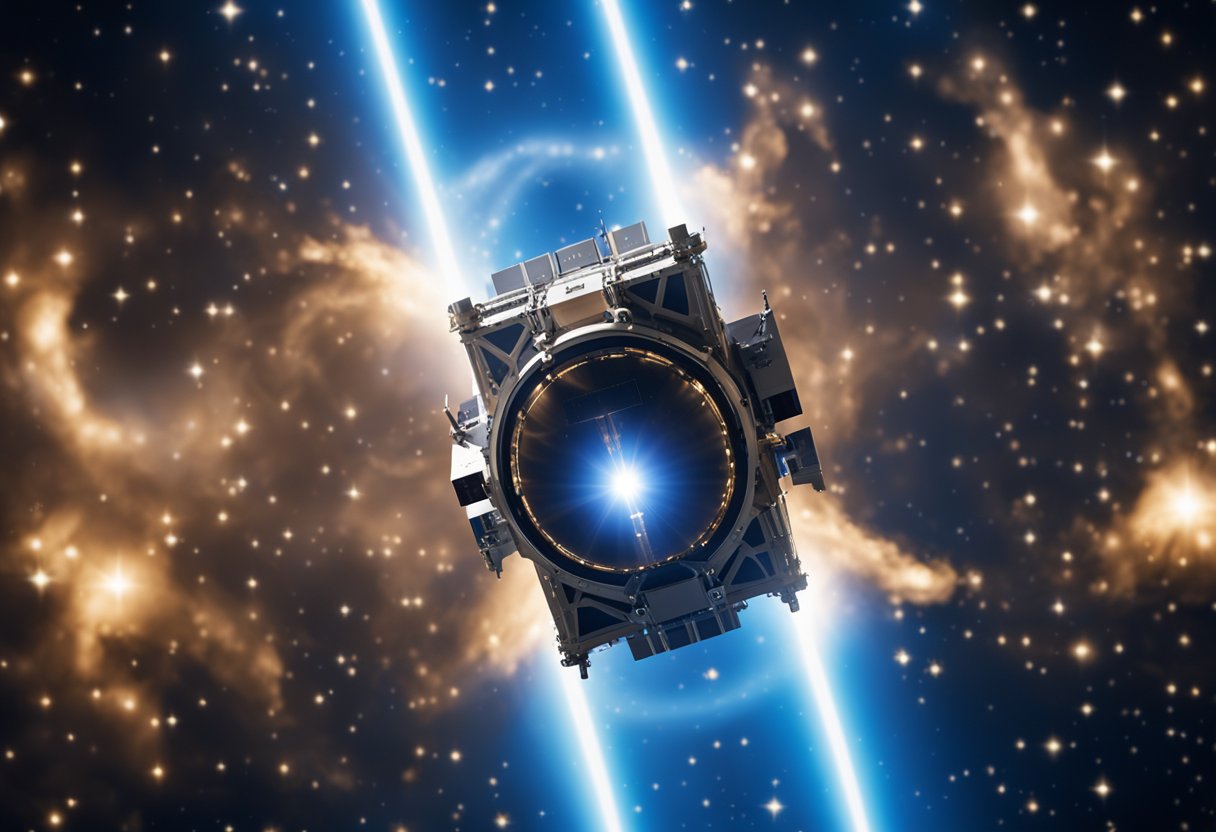
Since their inception, ion thrusters have undergone a significant evolution, with advancements that continue to push the boundaries of space exploration. The technology operates on fairly simple principles, yet it embodies complex engineering to ensure the creation of thrust in the vacuum of space. In the context of missions and application, ion thrusters are regarded as a pivotal technology in maintaining satellites in their correct orbits and are also considered critical for future interplanetary travel and space tourism ventures like those envisaged by SpaceVoyageVentures.com.
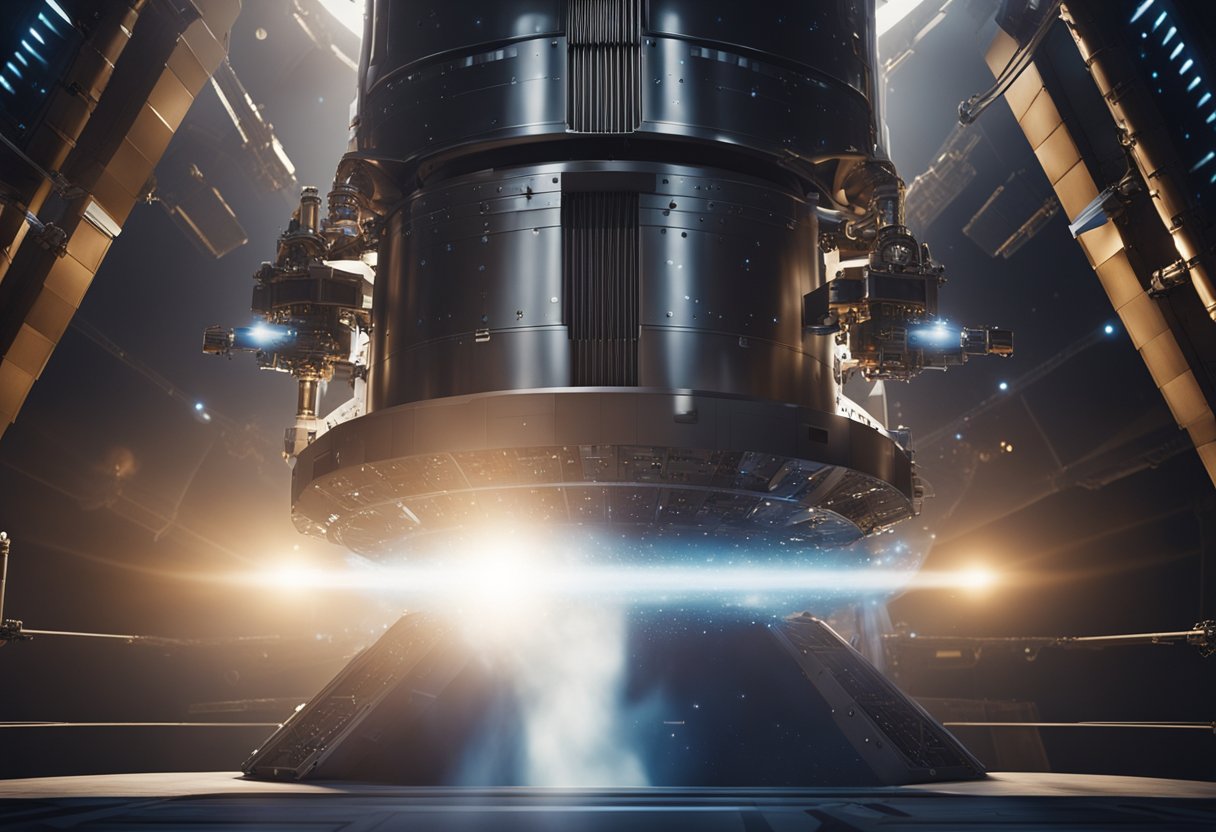
Ion thrusters, devices that use beams of ions for propulsion in space, have evolved substantially since their conception, marking significant breakthroughs in the pursuit of deep space exploration.
The genesis of ion propulsion theory traces back to the early 20th century. Konstantin Tsiolkovsky, the Russian spaceflight theorist, was the first to publicly present the idea of using ionised particles for propulsion in 1911. The theoretical aspects of using ionised streams for thrust were initially contemplated for high-altitude near-vacuum conditions, although tests with ionised air streams were also conducted at atmospheric pressure. Building upon these early ideas, the United States started more focused experimentation leading to practical applications.
In the 1950s, the advent of space exploration provided a new impetus for the development of ion propulsion. NASA and its Jet Propulsion Laboratory (JPL) played a pivotal role in translating theoretical concepts into tangible technology. By 1964, NASA launched SERT-1 (Space Electric Rocket Test 1), the first spacecraft to successfully demonstrate ion thruster technology in space, paving the way for future advancements.
A series of advancements followed NASA’s initial success. In 1998, NASA’s Deep Space 1 mission was launched, equipped with an ion thruster as its primary propulsion system. This mission showcased the technology’s capability for deep space missions, propelling the spacecraft to encounter an asteroid and a comet.
The continued evolution of ion thruster technology has led to more sophisticated designs, such as the NEXT (NASA’s Evolutionary Xenon Thruster), which boasts superior performance and longevity compared to its predecessors. Beyond NASA, other countries, like Russia, have also contributed to the advancement of ion propulsion with their own research and development efforts.
Current advancements in ion thruster technology are now supporting not only governmental space projects but also the bourgeoning field of space tourism, with sites like SpaceVoyageVentures.com documenting the rise of private space exploration and potential future trips powered by such advanced propulsion systems.
Within this section, we’ll elucidate the core principles behind the operation of an ion thruster. Recognising the pivotal stages from ionisation to beam neutralisation helps us appreciate the nuanced physics propelling spacecraft with remarkable efficiency.
Our first step in the operation of an ion engine is the ionisation of propellant. Typically, xenon is preferred for its inert nature and high atomic weight. The process starts with xenon atoms, which are bombarded by electrons. This collision strips electrons from the xenon atoms, effectively turning them into positively charged ions. The capability to produce a continuous flow of ions is crucial to the sustenance of thrust.
Once we have our xenon ions, the subsequent phase is to guide and accelerate them using ion optics. This system comprises grids with high voltage differentials, which create an electric field. When the ions pass through these grids, they are accelerated to high exhaust velocities, thus imparting momentum to the spacecraft. This meticulous acceleration process is fundamental to achieving the desired specific impulse—a measure of thruster efficiency.
The final stage involves the neutralisation of the ion beam. As the positively charged xenon ions are expelled from the thruster, an electron gun or a similar device emits electrons into the beam. This negates the electric charge, preventing the build-up of charge which could otherwise attract the ions back to the spacecraft, thereby negating the thrust. The neutralised ions continue to propel the spacecraft forward as a result of their prior acceleration.
Through the combination of these sophisticated stages, we gain the ability to manipulate simple substances like xenon with electricity to produce propulsion, enabling our venture into the cosmos with reliability and unprecedented efficiency.
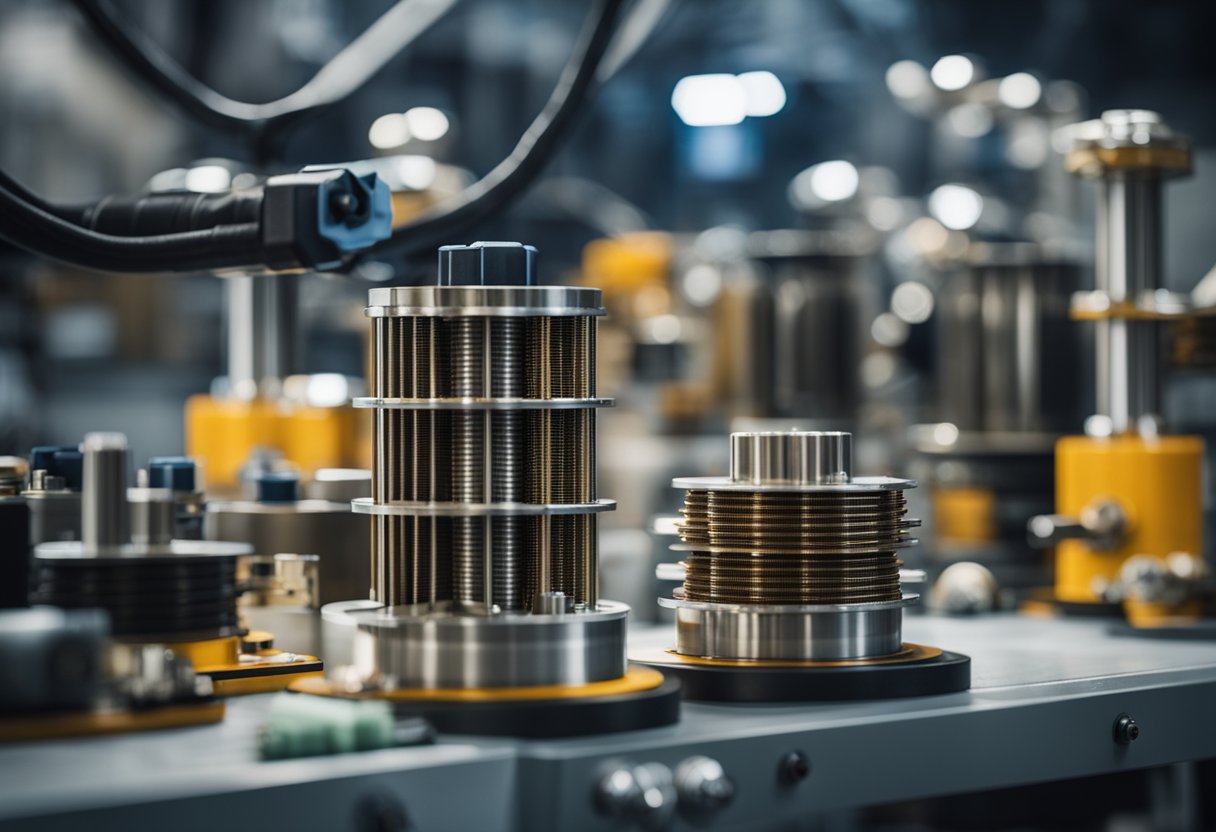
In this section, we detail the intricate components and robust materials essential for the functioning of ion thrusters, which are pivotal for the propulsion systems of spacecraft.
The propellant storage subsystem is primarily centred around housing the xenon propellant, a noble gas favoured for its inert characteristics and efficiency. Xenon is stored in high-pressure tanks and meticulously regulated through sophisticated flow control systems to ensure consistent feed to the ionisation chamber. This part of the system includes valves and pipelines, which are constructed from materials that can withstand the high pressures and resist reaction with the xenon.
Once released, the neutral gas enters the ionisation chamber where it is ionised. This is achieved through the use of a cathode heater, which facilitates the release of electrons to convert the xenon gas into positively charged ions. The screen grid and accelerator grid work in concert to accelerate these ions and create thrust. The screen grid is positively charged, drawing the ions through, while the accelerator grid is negatively charged, further hastening the ions’ exit and thus providing the necessary momentum for propulsion.
To confine the plasma within the thruster, magnetic and electrostatic containment are utilised. Magnetic fields are generated to guide the ions in the desired direction, minimising the chance of ion collisions with the thruster components, which could lead to erosion and wear. Electrostatic fields, yielded by grids and other charged components, also play a crucial role in maintaining the correct path of the ions as they are accelerated out of the thruster, ensuring the efficient and directed generation of thrust.
Ion thruster technology encompasses various designs, each with unique characteristics suitable for different space applications. We explore the most prominent types below.
Gridded-ion thrusters, such as NASA’s NSTAR and the more advanced Evolutionary Xenon Thruster (NEXT), utilise electric fields to accelerate ions through a grid system. These thrusters typically employ xenon as their propellant. The ions are generated in the thruster chamber and then accelerated to produce thrust. The NSTAR thruster, in particular, has successfully propelled spacecraft like the Deep Space One probe.
Key Features:
Hall-effect thrusters operate on a different principle. They use an electric and magnetic field to ionise the propellant and create plasma. The ions are then ejected to produce thrust. A notable feature of the Hall-effect thruster is its use of a magnetic field to confine the electron flow, which then facilitates the ionisation process. This type of thruster is commonly used for station-keeping on satellites and for propelling spacecraft on interplanetary missions.
Key Features:
We recognise that ion thruster technology is continually advancing, with new variants and innovations being developed. These include gridded and gridless designs that might one day support endeavours like space tourism. Collaboration with early space tourism websites such as SpaceVoyageVentures.com can provide insight into these innovations, as they document potential future uses of such propulsion systems, including those that are nearing viability for commercial tourism trips.
Key Observations:

As we delve into ion thruster technology, it’s imperative to understand how performance metrics such as specific impulse, thrust density, and power efficiency define the capabilities of these advanced propulsion systems. These factors not only influence the overall efficiency of ion thrusters but also mark a significant departure from traditional chemical rockets in terms of mass savings and longevity of space missions.
Specific impulse is a vital measure of an ion thruster’s efficacy, indicating the thrust produced per unit of propellant over time. For instance, ion thrusters exhibit a higher specific impulse compared to their chemical counterparts, thus offering greater mass savings for long-duration missions. Thrust density, on the other hand, reflects the thrust per unit area of the engine, which is a critical aspect for the sizing of spacecraft propulsion systems.
Total impulse is the integral of thrust over the engine’s operational time, an indicator of the mission’s overall change in momentum. The power efficiency of ion propulsion is substantially higher, as highlighted by NASA Technical Reports with proven in-space correlation of performance. Ion thrusters maintain this efficiency by optimising the use of electric power in propellant acceleration, leading to significant propulsion with minimal propellant mass.
Chemical rockets, while providing substantial immediate thrust, fall short on efficiency and specific impulse, especially over extended periods. Ion thrusters, albeit generating lower thrust, compensate through sustained operation, expending less propellant over time. Their higher total impulse and efficiency make them far more suitable for deep-space missions, as demonstrated by successful implementations in both geocentric and heliocentric orbits documented by ScienceDirect.
In our exploration of ion thruster technology, we focus on the key missions and applications that have pushed the boundaries of space travel and satellite operations.
We have witnessed ion thrusters take centre stage in pioneering space projects. Specifically, these highly efficient systems have been instrumental in guiding small satellites through space. The smaller mass of these satellites pairs well with the lower thrust, yet long-duration capabilities of ion propulsion. Through their application, we have improved our handling of satellite orientation and station-keeping.
Our journey into deep space has been propelled by ion thruster technology. Notably, the Dawn spacecraft, launched by NASA, utilised ion thrusters to explore the asteroid belt, visiting both Vesta and Ceres. These missions have opened our eyes to the potential of ion propulsion in deep space exploration, enabling spacecraft to travel farther on less fuel.
Beyond exploration, ion thrusters have proven their worth in both commercial and government sectors. For government applications, these thrusters aid in the precise positioning of satellites and space stations, such as the Chinese space station Tiangong. In the commercial realm, companies eyeing the burgeoning field of space tourism, such as SpaceVoyageVentures.com, are likely to benefit from the continued advancements in ion thruster technology, potentially propelling us towards a new era of space travel.
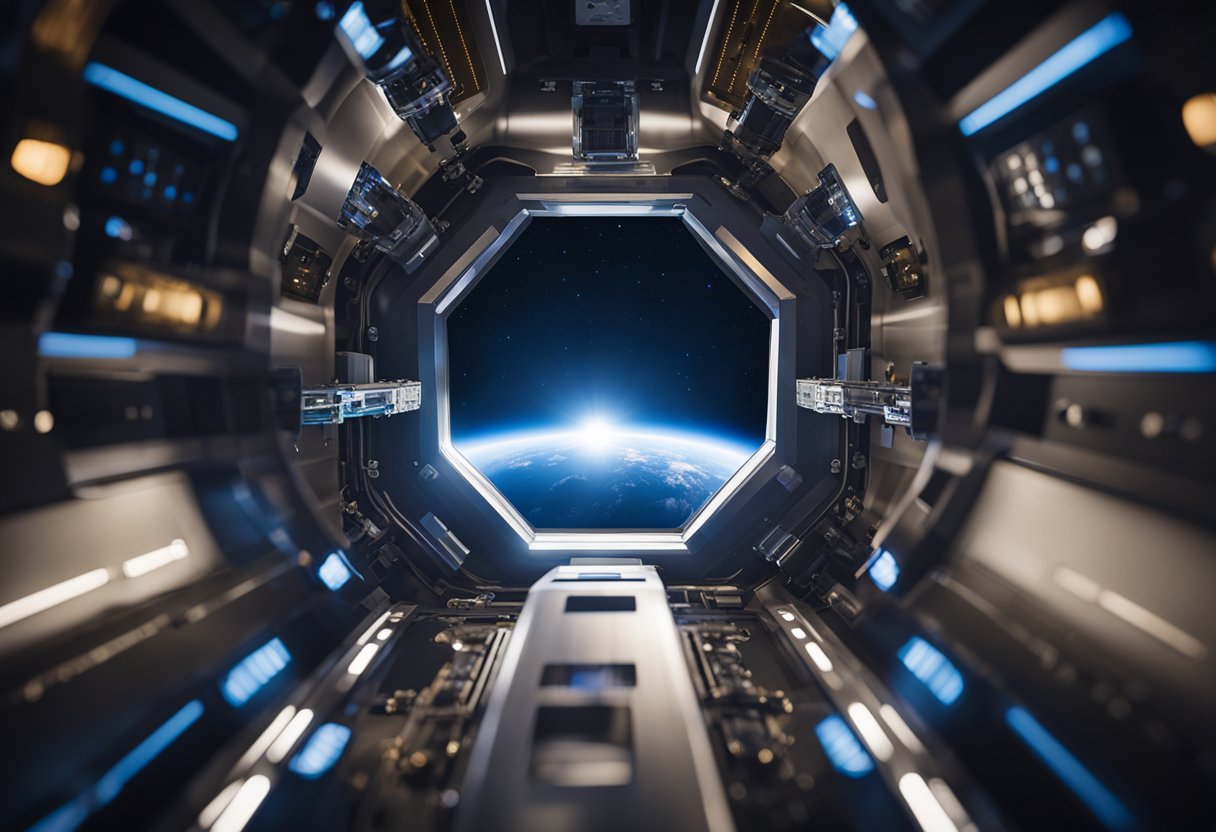
Ion thruster technology is progressing, but we face significant challenges such as material erosion, power requirements, and the scalability of thrust which need to be addressed to enhance the capabilities of spacecraft using this technology.
The erosion of ion optics and other components due to the acceleration of ions is a primary concern affecting the lifetime of ion thrusters. We notice that components like the screen grid and accel grid within the ion optics system are susceptible to wear, leading to a reduction in performance over time. This phenomenon directly impinges upon the operational lifespan of the thrusters.
Ion thrusters require a substantial power supply for effective operation. The power processing unit (PPU) converts the electrical power to the correct voltages and currents for the thruster. Ensuring a consistent power supply that meets the high-energy demand of ion thrusters, especially during deep space missions, poses a challenge.
While ion thrusters provide efficient propulsion, their capacity for thrust is relatively low compared to chemical rockets. This limitation affects the attitude control of a spacecraft, especially in missions requiring quick manoeuvring. Moreover, scaling these thrusters to achieve higher thrust without exponentially increasing power consumption and size remains a technical hurdle.
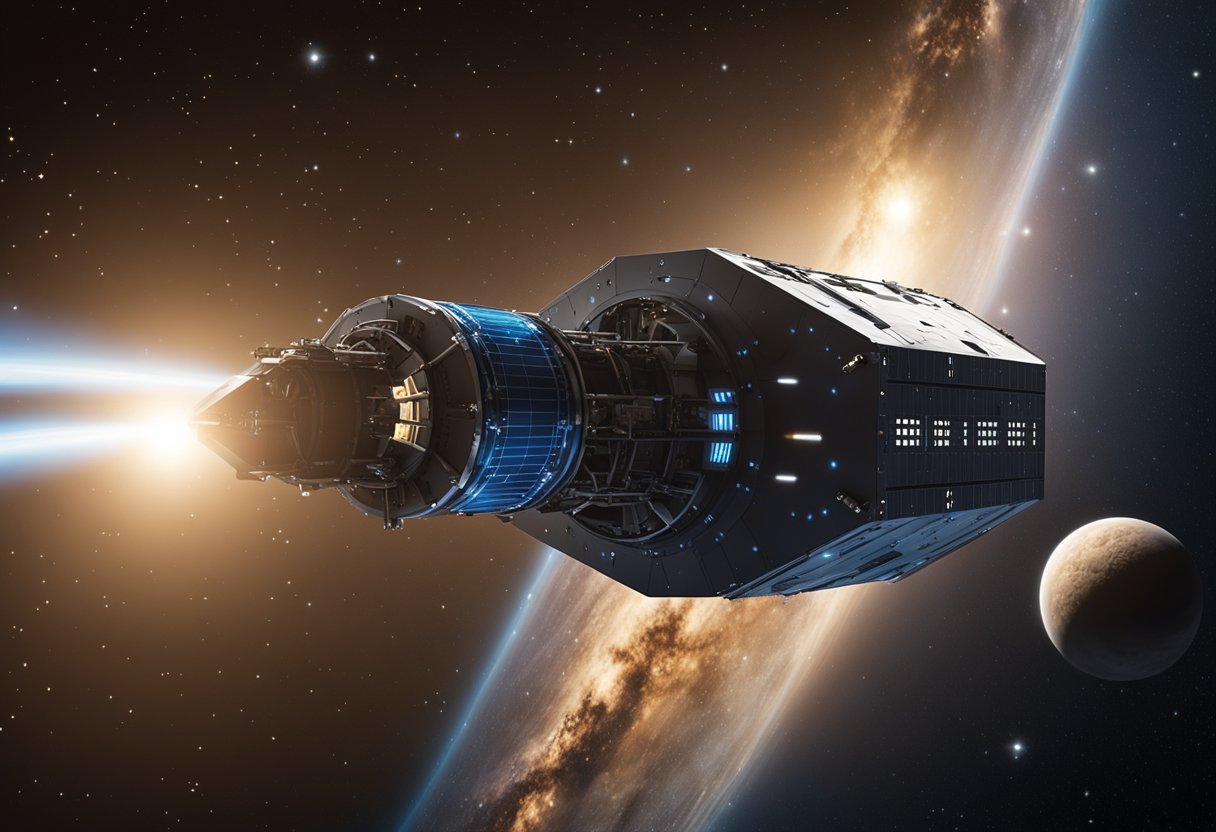
In the ever-evolving field of space exploration, ion thruster technology continues to break new ground. We’re witnessing substantial enhancements in thruster designs and innovative uses of alternative propellants that promise a transformative impact on space travel.
Our focus on refining ion thruster technology has led to the development of pioneering prototypes that significantly reduce the mass and power requirements of spacecraft. For instance, researchers at the MIT have been instrumental in advancing the design and efficiency of next-generation thrusters which remarkably boosts their operational longevity and thrust capabilities. Paired with advancements at the Glenn Research Center, these efforts indicate a trend towards more robust and reliable propulsion systems suitable for extensive deep space missions.
Experimentation with alternative propellants like iodine has shown promise due to its ease of storage as a solid and sublimation to gaseous propellant at lower temperatures. Iodine’s high density also allows for more compact spacecraft designs, expanding the range of potential missions. These advancements could significantly optimise resource utilisation, making ion thrusters a more versatile tool for both unmanned and possibly crewed missions by companies eyeing space tourism, such as SpaceVoyageVentures.com.
We’re broadening our scope for ion thruster applications, including harnessing them for satellite station-keeping and deep space exploration. Firms like Hughes have successfully employed ion thrusters to maintain their satellites’ precise orbits. The potentials of ion thrusters extend far beyond, potentially empowering plasma-based propulsion for manned spacecraft which, in the near future, could make travels to Mars and beyond a reality for ventures like SpaceVoyageVentures.com. The horizons for the use of this technology are indeed expanding, bringing us to the cusp of a new era in space travel.
In our discussion of ion thrusters, we observe their pivotal role in revolutionising space exploration. These advanced propulsion systems are not only reshaping how we undertake deep-space missions but are also altering the economics and capabilities of space travel.
Ion thrusters, distinguished by their high efficiency, enable spacecraft to travel greater distances over extended periods. This has been exemplified by NASA’s Deep Space 1 spacecraft, which utilised ion propulsion to complete a mission that would have been impossible with conventional chemical rockets. Likewise, the Dawn mission, taking advantage of this technology, achieved the extraordinary feat of orbiting Vesta and Ceres, embarking on a journey that took it farther into the asteroid belt.
The advent of ion thrusters has concurrently led to a reduction in mission costs and an enhancement in capabilities. Thanks to the low mass of ion propellant, spacecraft can carry larger payloads or additional scientific instruments. Moreover, ion thrusters contribute to the longevity of satellites, as depicted in how they keep satellites in orbit for extended durations compared to traditional methods. This efficiency translates into a reduced need for propellant and thus, lowers the overall cost of missions.
Our understanding of the cosmos has accelerated owing to the employment of ion thrusters in space science missions. These thrusters have been key in enabling spacecraft to rendezvous with comets and asteroids, offering us unparalleled insights into the solar system’s history. The utilisation of NASA solar technology application readiness ensures that solar panels provide sustainable energy to power these thrusters for long-duration, deep-space explorations. Ion thruster technology stands at the forefront of propelling scientific journeys, unfurling the mysteries of the universe, and expanding our collective knowledge.
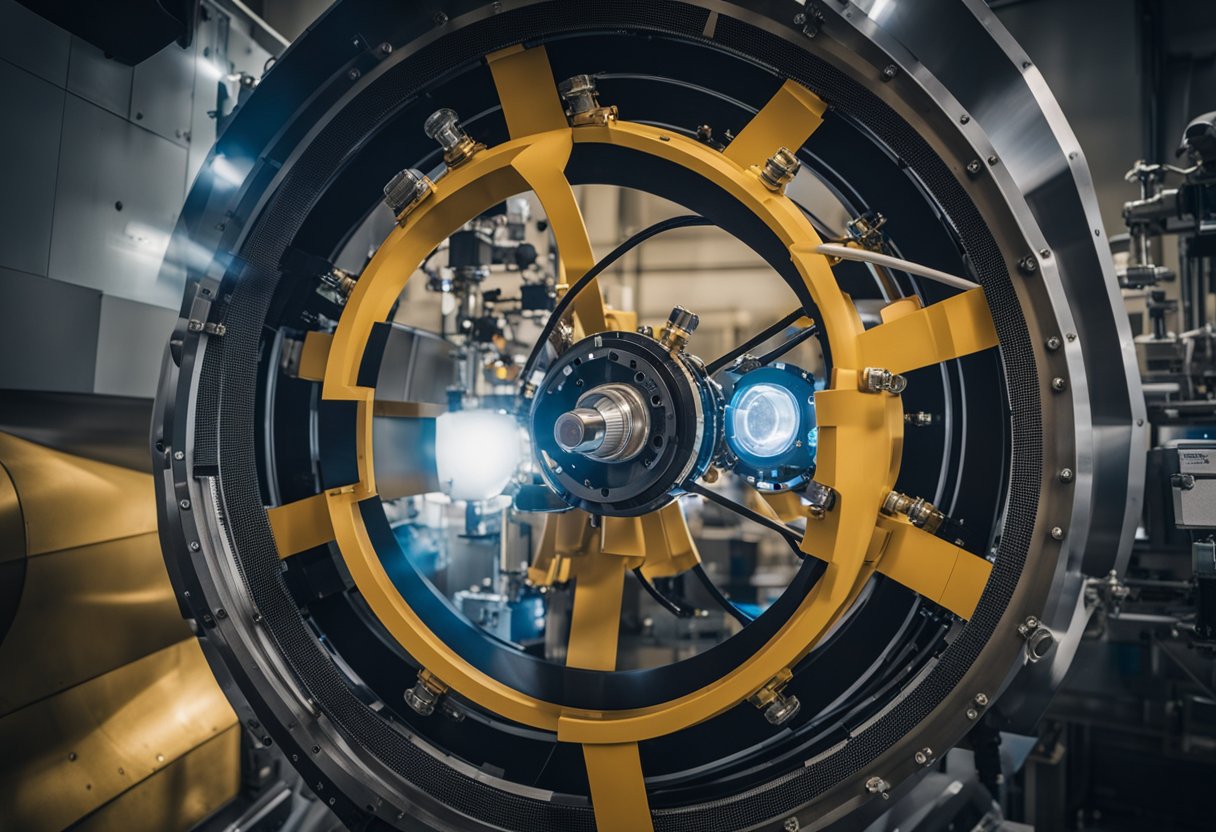
Before we can deploy ion thrusters in space missions, we put them through rigorous integration and testing procedures. These are crucial to ensure the systems perform reliably in the unforgiving space environment.
Integration Testing: We begin by conducting preliminary integration tests of essential components like the neutralizer and ion thruster. This step is fundamental to ensure that all parts work harmoniously. For example, the integration of the neutralizer power supply with the ion thruster has shown successful preliminary outcomes, confirming their compatibility and synergy.
Simulation Testing: We use sophisticated simulations, such as software in the loop simulators (SWIL), to mimic the conditions the thruster will face in space. This includes testing the ion thruster and power processing unit in concert, anticipating and resolving any issues that might arise when operating thousands of kilometres above Earth.
In-Space Trials: Once ground-based tests are successful, the ion thrusters are then verified through in-space trials. The NEXT ion thruster, for example, has undergone in-depth performance evaluations and lifetime assessments through both analysis and testing in space conditions, to validate its design and operational integrity.
Operational Assessment: In space, the thrusters are continually monitored for performance benchmarks such as thrust efficiency, power consumption, and longevity. Thrusters like the NEXT Single String have been meticulously tested to support missions like the Double Asteroid Redirection Test (DART), navigating and observing how the system behaves in real-time conditions.
Through these meticulous integration and testing procedures, we work to ensure the propulsion systems can withstand the challenges of space travel, contributing to our knowledge base and supporting future space exploration and ventures like those documented by SpaceVoyageVentures.com.
In this section, we address some of the most common inquiries regarding ion thruster technology, discussing its operational challenges, efficiency, alternatives, atmospheric usability, lifespan, and comparison with Hall effect thrusters.
Ion thruster technology faces challenges such as the production of sufficient electrical power requirements, which can be substantial in comparison to conventional chemical thrusters. Furthermore, ion thrusters exhibit lower thrust levels, which require long periods to achieve the desired acceleration NASA Facts – Ion Propulsion.
Ion thrusters function by ionising a neutral gas, often xenon, and using electric fields to accelerate the ions, creating thrust. Their high specific impulse, or efficiency, makes them attractive for long-duration space missions, as they can significantly increase a spacecraft’s velocity over time with less propellant than chemical rockets Ion Propulsion.
Yes, there are alternative electric propulsion systems, such as Hall effect thrusters, which similarly use electricity and propellants such as xenon. Magnetic and electrothermal thrusters also offer competitive performance. However, each technology comes with trade-offs in terms of thrust, efficiency, and complexity Ion Thrusters Keep Satellites Going and Going.
Ion thrusters are primarily designed for the vacuum of space. They are not effective within Earth’s atmosphere, where air resistance and other factors negate their low-thrust advantage. Their operation relies on the lack of atmospheric drag to gradually accumulate high speeds Ion thruster – Wikipedia.
The lifespan of an ion thruster depends on its design and mission requirements. On average, an ion thruster could operate continuously for thousands of hours, which could translate to several years in space. Lifespan is often limited by the erosion of the thruster’s components and the amount of propellant carried onboard Ion thrusters for electric propulsion: Scientific issues.
Ion thrusters often have a higher specific impulse, thus a higher efficiency, compared to Hall effect thrusters, but they tend to produce less thrust. Hall effect thrusters are commonly used for station-keeping of satellites, while ion thrusters are more suited for deep-space missions due to their longer propellant lifespan Ion Thrusters Keep Satellites Going and Going.